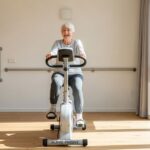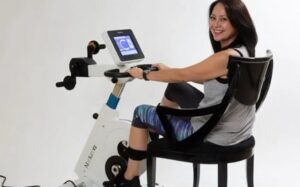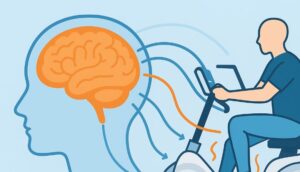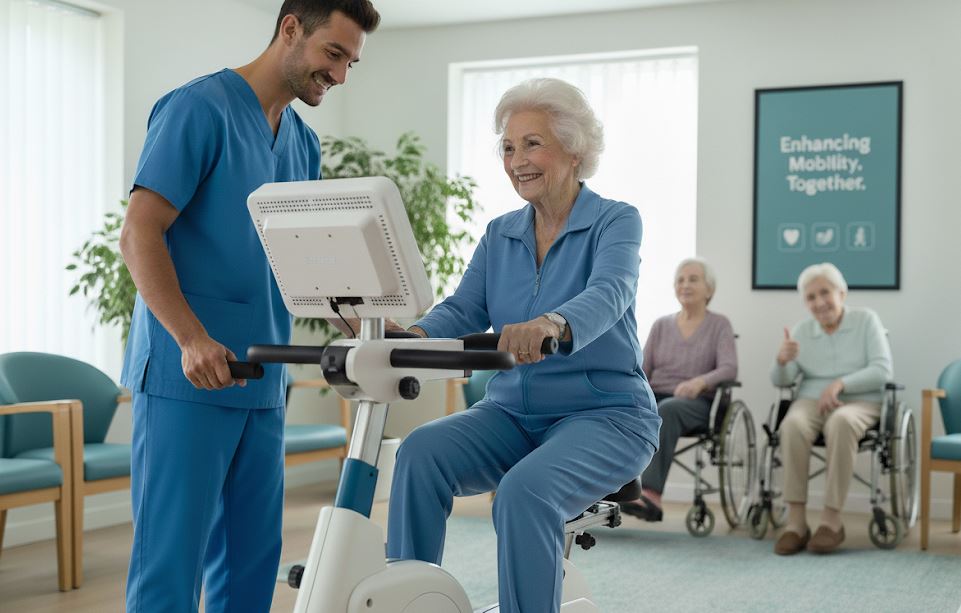
As Canada’s population ages, long-term care homes face increasing challenges in keeping residents active, engaged, and healthy. Traditional exercise programs often fall short for seniors with mobility limitations, neurological conditions, or low endurance. That’s where Active-Passive Cycle Therapy comes in—an adaptive form of exercise that meets residents where they are and provides benefits for both individuals and care facilities.
Did you know? At MedUp, our Active-Passive Cycle Trainer is designed to support mobility, strength, and wellness for seniors and individuals with limited movement. Long-term care homes are increasingly adopting this innovative therapy to enhance resident health while reducing strain on staff.
The Growing Demand for Adaptive Exercise in Long-Term Care
Mobility loss and sedentary lifestyles are major concerns in long-term care. According to the Canadian Institute for Health Information, over half of residents in care homes experience reduced mobility, which increases the risk of falls, cardiovascular issues, and overall decline in quality of life.
While traditional physiotherapy sessions are effective, they are often limited in frequency and require staff supervision. Long-term care homes are now seeking exercise solutions that can be safe, easy to use, and accessible to residents of varying ability levels. Active-Passive cycling meets all these criteria, making it a practical and scalable solution.
What is Active-Passive Cycle Therapy?
Active-Passive cycling is a form of motor-assisted exercise designed for individuals with limited strength or mobility. The cycle trainer allows users to:
- Cycle actively by pedaling under their own power
- Cycle passively with the assistance of a motor if they lack the strength to pedal independently
- Combine both modes so the motor provides support while encouraging the resident to contribute as much as possible
This flexibility makes the therapy suitable for a wide range of residents, from those with mild mobility issues to individuals recovering from stroke, living with Parkinson’s, or managing conditions such as multiple sclerosis.
Benefits for Residents
- Improved Circulation and Cardiovascular Health
Regular cycling, even with motor assistance, promotes blood flow, reduces swelling, and supports heart health. For residents who spend long hours sitting, this is especially valuable. - Maintaining and Building Muscle Strength
The cycle provides resistance when residents are able to pedal actively, which helps preserve muscle mass and prevent further decline. - Joint Mobility and Flexibility
Gentle repetitive motion reduces stiffness, promotes range of motion, and eases discomfort in joints commonly affected by arthritis or immobility. - Neurological Support
For residents with neurological conditions, repetitive motion helps stimulate neuroplasticity, improving motor control and coordination over time. - Enhanced Mood and Engagement
Physical activity releases endorphins and reduces feelings of isolation or depression. Cycling is also more engaging than passive sitting exercises, encouraging residents to stay involved in their own care.
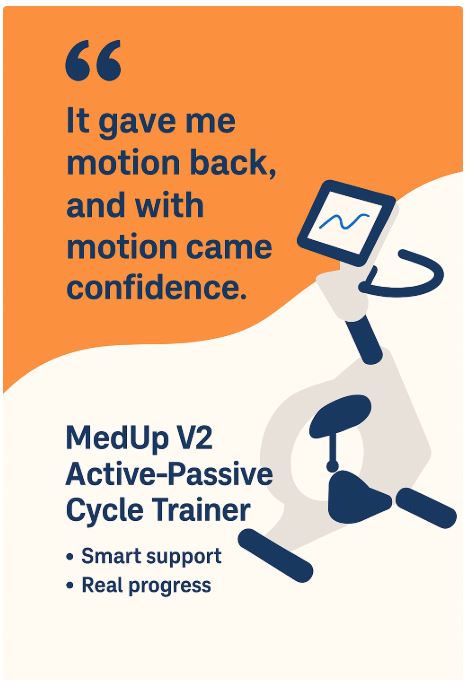
Benefits for Care Facilities
Active-Passive cycling doesn’t just help residents—it makes life easier for care facilities and staff.
- Scalable Therapy Option: Residents can use the cycle trainer individually, reducing the need for one-on-one physiotherapy at all times.
- Less Staff Strain: Motor-assisted therapy reduces the amount of manual movement staff must provide, preventing caregiver fatigue.
- Cost-Effective: Investing in cycle therapy equipment provides long-term value by reducing hospital transfers and minimizing secondary health issues.
- Attractive to Families: Families often look for homes that offer innovative programs to improve quality of life. Adding Active-Passive cycling can be a differentiator for facilities competing for admissions.
Success Stories in Long-Term Care
Many long-term care homes across Canada and internationally have begun incorporating Active-Passive cycling into daily routines. Facilities report that residents who were once disengaged from physical activity now look forward to their cycling sessions. Over time, these residents show improvements in mobility, strength, and mood, while staff notice a reduction in the need for physical assistance during daily tasks.
How to Integrate Active-Passive Cycling into Daily Routines
Introducing this therapy doesn’t require major schedule overhauls. Care homes can integrate sessions into existing activity blocks or physiotherapy programs. Best practices include:
- Offering short, 15–20 minute sessions to avoid fatigue
- Scheduling cycling in the morning to energize residents for the day
- Pairing the activity with music or group settings for added engagement
- Tracking resident progress to share improvements with families and healthcare providers
The Future of Wellness in Long-Term Care
As the demand for innovative care solutions grows, Active-Passive Cycle Therapy is becoming a cornerstone of resident wellness. It provides the right balance of accessibility, safety, and effectiveness, making it an ideal fit for long-term care homes that want to improve resident outcomes while supporting staff.
By embracing this technology, facilities not only enhance physical health but also promote dignity, independence, and quality of life for seniors.
Learn more about how Active-Passive Cycle Therapy can support your residents and staff today.
